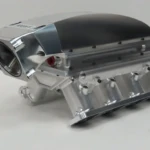Maintain Accuracy: Necessary CNC Machine Tool Maintenance for Optimum Performance
In the high-risk field of precision manufacturing, CNC machines are at the heart of production. Whether you’re manufacturing complex aerospace parts or rugged automotive components, your CNC equipment is a significant investment. As with any complex piece of machinery, its longevity, accuracy and reliability depend entirely on one key factor: Proactive and meticulous maintenance.
Neglecting maintenance is a costly gamble. In addition to the immediate risk of catastrophic failure, poorly maintained machinery can lead to gradual performance degradation. This manifests itself in dimensional inaccuracies, poor surface finish, increased scrap rates, unplanned production line shutdowns, and ultimately shortened tool life. Research consistently shows that preventable failures result in staggering productivity losses—often 20-30% or more.
Instead, a sound maintenance program isn’t just about avoiding disaster; It’s about unleashing consistent excellence. It ensures parts meet tight tolerances time and time again, maximizing spindle life, protecting your substantial investment, and keeping your operation predictable and profitable. exist Honglaite CNCleveraging our advanced five-axis machining capabilities every day, we intrinsically understand this. Our commitment to precision extends beyond manufacturing; it’s embedded in how we maintain the tools that make it possible.
Building CNC Maintenance Basics: A Layered Approach
Effective maintenance is not a one-size-fits-all task. It requires a structured approach, usually categorized by frequency:
1.Daily Responsibilities: First Line of Defense (Operator Centered)
- Visual inspection: Conduct thorough inspections at the beginning and end of each shift. Check for leaks (oil, coolant, air), loose parts, unusual debris, damaged cables or hoses, and any signs of impact damage. Begin by completely turning off power to the machine and following lockout/tagout procedures.
- Cleanliness is important: Remove chips, dust and coolant residue from all accessible machine surfaces – workbench, tool change area, tunnel covers, chip trays and especially spindle nose/tool tapers. Use recommended cleaner and soft brush/cloth. Never use compressed air to blow chips toward sensitive parts; instead, vacuum them away.
- Road cover inspection: Make sure the telescoping access cover retracts smoothly without binding. Remove built-up edges that can clog mechanisms and cause costly damage.
- Lubrication level check: Visually inspect key points such as the oil level in the centralized lubrication tank and the spindle coolant level (if separate). Add only lubricants approved by the manufacturer. Don’t overfill it.
- Coolant system management: Check the coolant concentration and pH using a refractometer and test strips. Top up the coolant mixture (not just water!) as needed. Skim any oil slick from the surface. Make sure the filter (paper tape, magnetic) is clean and flowing freely.
- Verification before operation: Listen for unusual sounds (spindle jump, servo noise) during the warm-up cycle. If equipped, perform a blow cycle. Visually inspect the tool holder for wear and damage before loading.
2. Weekly/monthly tasks: Protect critical systems
- Deep cleaning: Go beyond daily wiping. Clean under guards and lids where debris can collect (safely!). Flush the chip conveyor or conveyor (if equipped). Clean the coolant tank walls and filter more thoroughly.
- Detailed lubrication inspection: Verify that the automatic lubrication system adequately maintains lubrication points. Follow the schedule and manually lubricate any points not automatically covered. Check whether the grease nipple is clogged.
- Lubricating oil verification method: Make sure the road wipers are intact and free of debris. Check the flow meter on the lubrication system to confirm that oil is reaching the linear guide and ball screw.
- Hydraulic/pneumatic inspection: Check hydraulic oil level and condition. Check for air leaks by listening or using soapy water. Drain the moisture from the air filter bowl.
- Tools and workholding: Inspect tool holders more closely for taper wear (use a taper gauge) and pull stud integrity. Check the clamping force of the vise and clamps. Clean collet collet and T-slot nut.
- Control cabinet inspection (external): Make sure the cabinet fans and filters are clean and functioning properly. Exterior vents must be clear for proper cooling.
3. Quarterly/bi-annual tasks: Ensure long-term health
- Spindle maintenance: Consider a spindle "air purification" Run at medium speed with the tool changer empty to help expel contaminants (see manual). Monitor spindle runout using test rods and indicators. Listen carefully for bearing noise under load. Check and fill the through-spindle coolant (TSC) system (if applicable).
- Axis calibration and accuracy check: Perform laser calibration (or use precision scale/indicator settings) to verify machine geometric accuracy (squareness, straightness, positioning repeatability). For five-axis machines, checking pivot point accuracy and kinematic calibration is critical. Ballbar testing is highly recommended for diagnosing dynamic performance issues.
- Lubrication system services: Replace the filter in the centralized lubrication system. Drain and replace hydraulic oil if planned. Flush lines if recommended.
- Electrical connection check (internal): Machine completely powered off and lockedTight terminal connections in the control cabinet (make sure the personnel are qualified!). Look for signs of overheating (discoloration). Check servo motor connections and encoder cables.
- Backup key parameters: Regularly back up machine parameters, tool compensation, macros and calibration settings to a secure off-machine location (USB drive, network storage).
4. Annual/On-Demand Tasks: A Deep Dive
- Professional Calibration: Engage qualified technicians (usually OEM or certified experts) to perform comprehensive volumetric accuracy verification, five-axis motion calibration verification/compensation, laser interferometer inspection, and complete geometric alignment.
- Coolant system overhaul: Thoroughly drain, flush and clean the entire coolant system (tank, lines, pump). Replace old coolant with fresh mixture.
- Component wear inspection: Evaluate ball screws and linear guides for signs of wear, play, or damage. Check the belt for tension and cracks. Check servo motor brushes (if applicable). Consider vibration analysis for predictive maintenance.
Five axis maintenance Nurds:
Five-axis machining adds complexity. Special attention:
- Pivot Point Calibration: This defines the tool center point (TCP) accuracy in rotational motion. Mistakes here can lead to serious machining errors. Calibration is verified periodically using specialized fixtures or probes according to the OEM program.
- Rotation Axis Mechanics: Lubrication and clearance checks of the A/C (or B) turntable/trunnion are critical. Listen for unusual noises during rotational motion.
- Software updates: Five-axis kinematics and control software updates improve accuracy and fix bugs. Stay up to date on OEM recommendations.
- Tool and Fixture Stability: Complex five-axis motion exerts different forces. Make sure the clamps provide rigid, vibration-free clamping to counteract torque.
Build a winning maintenance culture
- Log everything: Maintain detailed logs every Procedure – date, tasks performed, parts replaced, lubricants used, results. This is invaluable for troubleshooting and resale value.
- Please follow OEM manual: The machine manufacturer’s maintenance manual is the final authority on schedules, lubricant specifications and procedures. Never deviate without consulting an expert.
- Investment training: Ensure operators and maintenance technicians are fully trained your specific machine. Understanding the warning signs and proper procedures are key.
- Use forecasting tools: Implement basic vibration monitoring, thermal imaging, or even simple performance tracking to identify issues before they lead to failure.
- Source quality parts and lubricants: Use OEM or high quality certified replacements for filters, oils, greases and critical components. Saving money here costs more in the long run.
GreatLight is committed to precision through care
Your CNC machine tool is a precision instrument and deserves careful maintenance. A rigorous maintenance schedule is not an expense; This is a strategic investment that guarantees productivity, quality and profit. Downtime is the enemy of efficiency, and scrapped parts can erode profitability. Preventive maintenance ensures your machines continue to produce parts that meet the most demanding specifications, day after day.
exist Honglaite CNCAs a professional five-axis machining manufacturer, we live and breathe precision. Our state-of-the-art equipment is rigorously and rigorously maintained based on decades of experience and stringent aviation standards. We know that the quality of the parts we offer—complex metal components quickly customized to your exact needs—starts with the impeccable condition of our machinery and our commitment to maintaining its peak potential.
in conclusion
The hum of a perfectly calibrated CNC machine producing perfect parts is the sound of a healthy manufacturing operation. Consistent, proactive maintenance is the cornerstone of achieving and maintaining this level of performance. By carefully following a structured maintenance plan tailored to your specific machine and operation, you can transform your CNC equipment from a mere asset into a reliable precision partner. You can minimize costly unscheduled downtime, maximize tool life and spindle life, ensure uncompromising part quality, and protect your substantial capital investment. Remember, in precision machining, every micron counts; let proper maintenance be the discipline to ensure those microns always work in your favor.
Frequently Asked Questions (FAQ): CNC Machine Tool Maintenance
Q1: How often should I lubricate the machine’s guide rails and ball screws?
- one: Strictly adhere to the machine manufacturer’s specific schedule listed in the manual. This can be an hourly automatic lubrication cycle or daily manual inspection and replenishment of certain lubrication points. Don’t just rely on guesswork—underlubrication can lead to rapid wear, while overlubrication can attract chips and cause other problems. It is critical to manually verify weekly that the automatic lubrication system is actively distributing oil/grease.
Q2: Can I save money by using cheaper coolant or lubricant?
- one: We strongly advise against this. Using low quality or incorrect lubricant or coolant is a false economy. They may not provide adequate lubrication, chip protection, corrosion resistance or thermal stability. This can lead to accelerated component wear (rails, ball screws, spindle bearings), rust and poor surface finish. Always use the fluid specified by the machine tool manufacturer or a certified equivalent from a reputable supplier. Contaminated coolant also poses a significant health hazard.
Q3: Why is daily cleaning so important? Can’t I do a big cleaning once a week?
- one: Chips, dust and coolant residue are highly abrasive. Leaving them on machine surfaces, especially overnight, can significantly accelerate wear on precision surfaces such as linear guides and ball screws. They can also cause channel covers to clog, corrode, block lubrication systems, and interfere with sensors or moving parts in tool changers. Routine cleaning prevents costly damage and maintains accuracy.
Q4: My five-axis machine looks like "leave" Has complex movements. Could it be a maintenance issue?
- one: Absolutely. While there may be programming or fixture issues, five-axis accuracy relies heavily on precise pivot point calibration and backlash-free operation of the rotary axis. These are critical maintenance items. Either error will result in significant position errors during simultaneous multi-axis motion. Scheduling periodic motion calibration checks and rotating axis mechanical inspections (lubrication, gear mesh clearance) is critical to five-axis reliability.
Q5: We have very few maintenance logs. Is it too late to start a proper plan?
- one: It’s never too late! Start your documented maintenance plan immediately. Consistency is key. Start with a thorough cleaning and inspection. Strictly adhere to the OEM manual’s lubrication and parts replacement schedule. Implement a documented plan Now Will slow further degradation, improve reliability, and provide a baseline for future troubleshooting. Consider having an inspection performed by a qualified technician to evaluate the current condition. GreatLight can provide advice on resuming routine maintenance.
Q6: What are the biggest mistakes shops make when it comes to CNC maintenance?
- one: The most common and costly mistake is to purely adopt reactive ("Run to failure") method instead of proactive. Waiting for damage leads to the most expensive repairs, longest downtime, and production disruption. Neglecting basic tasks like cleaning and coolant management because the machine "seems to be running" Potential damage caused internally is ignored, leading to premature failure and reduced quality. Preventive and predictive maintenance are always cheaper and more efficient than major repairs.
Q7: Why choose Honglaite precision CNC machining parts?
- one: GreatLight uses state-of-the-art five-axis CNC machining technology and an unwavering commitment to meticulous machine maintenance. This backbone of care ensures that our equipment consistently delivers the highest levels of precision, repeatability and surface finish for even the most complex metal parts. We offer rapid customization in a variety of materials and offer comprehensive one-stop post-processing and finishing services, guaranteeing exceptional quality from quote to delivery – all at competitive prices. Our precision is by design, not just programmed. [Contact GreatLight today] Meet your custom precision machining needs.









































